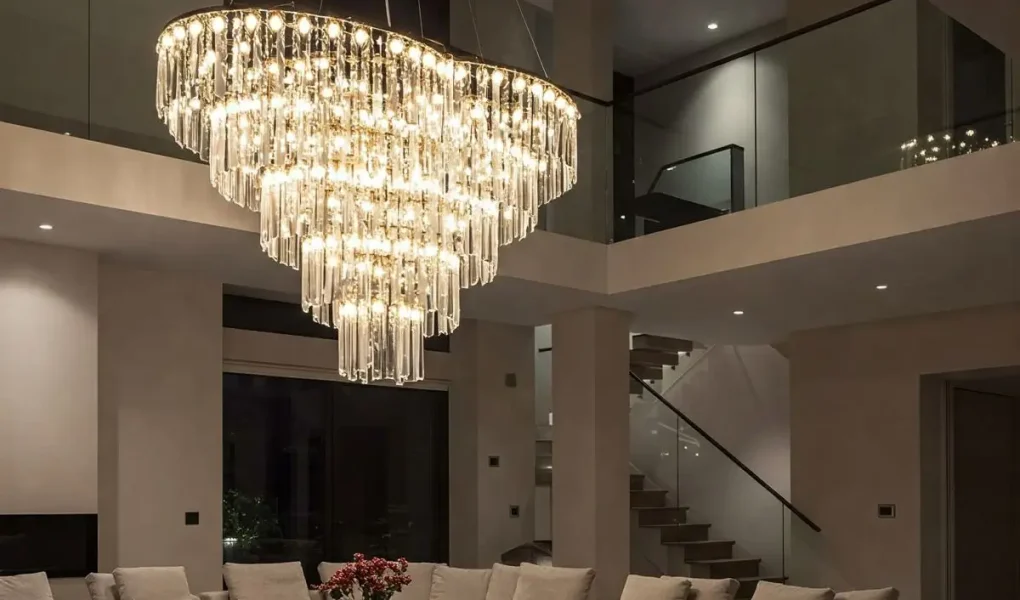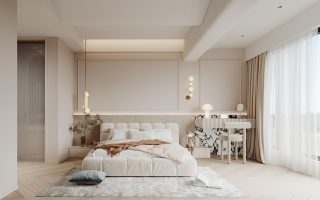The living room serves as a central hub in most homes, a place for relaxation, entertainment, and gathering. Selecting the right ceiling lighting fixtures is fundamental to creating an atmosphere that is both functional and inviting. The appropriate illumination can transform the perception of space, highlight architectural features, and set the desired mood.
Exploring types of ceiling lighting fixtures
Understanding the variety of available ceiling lights is the first step towards making an informed decision for your living room. Different styles offer distinct advantages in terms of light distribution, aesthetic appeal, and suitability for various ceiling heights and room sizes. Consider exploring diverse lighting fixtures to find the ideal match for your requirements. Common options include chandeliers, pendant lights, flush mount fixtures, semi-flush mount fixtures, and recessed lighting.
Chandeliers
Chandeliers make a strong visual statement, often serving as the focal point of a living room. They provide general ambient light and are available in countless styles, from traditional crystal designs to modern sculptural forms. Their suitability depends on ceiling height and room scale; a grand chandelier might overwhelm a small space, while a diminutive one could get lost in a large room.
Pendant lights
Pendant lights hang down from the ceiling on a cord, chain, or rod. They offer more focused light than chandeliers and can be used individually, in pairs, or in groups. Pendants work well over specific zones within a larger living room, such as a reading nook or a seating area, providing targeted illumination. They come in various shapes, sizes, and materials.
Flush mount fixtures
These lights sit directly against the ceiling, making them an excellent choice for rooms with lower ceilings (typically 8 feet or less). Flush mounts provide ample ambient light and tend to have a more understated appearance compared to chandeliers or pendants. Their design range spans from simple, functional units to more decorative options.
Semi-flush mount fixtures
Similar to flush mounts, semi-flush fixtures attach to the ceiling but feature a small gap between the fixture and the ceiling, created by a short stem. This design allows light to reflect off the ceiling, creating softer, more indirect illumination alongside direct downward light. They are versatile and suit rooms with standard ceiling heights.
Recessed lighting
Also known as downlights or can lights, recessed lighting fixtures are installed into hollow openings in the ceiling. They offer a clean, minimalist look as the main components are hidden. Recessed lights are highly versatile, providing ambient, task, or accent lighting depending on their placement, trim type, and bulb choice. They are often used in combination with other fixture types.
Selecting the right size and scale
Choosing appropriately sized lighting fixtures is essential for achieving visual balance in your living room. A fixture that is too small can appear insignificant, while one that is too large can dominate the space uncomfortably.
Calculating diameter
A general guideline for sizing a central ceiling fixture like a chandelier or pendant is to add the room’s length and width in feet. The resulting number, converted to inches, suggests a suitable diameter for the fixture. For example, a 12-foot by 15-foot room (12 + 15 = 27) might accommodate a fixture around 27 inches in diameter.
Considering height
The bottom of a ceiling fixture, especially chandeliers or pendants, should hang high enough to avoid obstructing views or posing a head-bumping hazard. In living rooms, aim for at least 7 feet of clearance between the bottom of the fixture and the floor. For higher ceilings, the fixture can hang lower, maintaining proportion. Over specific areas like coffee tables, pendants can hang lower, typically 30-36 inches above the table surface.
Matching style and decor
Your living room lighting fixtures should complement the overall design aesthetic of the space. Whether your style is modern, traditional, industrial, rustic, or eclectic, there are ceiling lights to match.
Material and finish coordination
Consider the materials and finishes already present in your living room furniture, hardware, and accessories. Choosing fixtures with complementary finishes (like brushed nickel, bronze, brass, matte black, or chrome) helps create a cohesive look. Materials like glass, metal, wood, fabric, and crystal each contribute a different textural and visual element.
Design consistency
Ensure the style of the lighting fixtures aligns with your decor theme. A sleek, metallic pendant suits a contemporary space, while an ornate crystal chandelier fits a traditional or glamorous room. For transitional styles, fixtures that blend classic shapes with modern finishes often work well.
Layering light for functionality and ambiance
Relying solely on one ceiling fixture often results in uneven lighting and lacks versatility. Implementing a layered lighting scheme, incorporating different types of light, provides flexibility and enhances the room’s atmosphere.
Ambient lighting
This is the general, overall illumination provided primarily by your ceiling lighting fixtures (chandeliers, flush mounts, recessed lights). It should offer comfortable brightness for general activities. Dimmers are highly recommended for ambient lighting to adjust the mood.
Task lighting
Task lighting provides focused illumination for specific activities like reading or working. While often achieved with table lamps or floor lamps, strategically placed pendants or directional recessed lights can also serve as effective task lighting in a living room.
Accent lighting
Accent lighting draws attention to specific features, such as artwork, architectural details, or plants. Track lighting or specific types of recessed lights (like gimbal or wall wash trims) are commonly used for accent purposes, adding depth and visual interest to the room.




